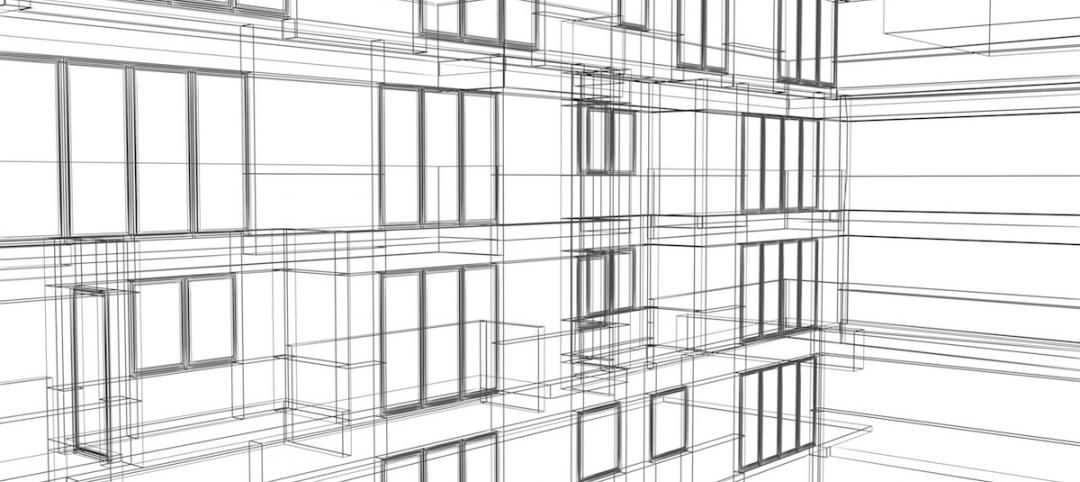Running an architecture firm—large or small—is full of challenges. Employee retention, new business development, and keeping current with technologies are just a few of the issues that partners and principals must manage on a daily basis. Yet as critical are they are, financial matters too frequently get bumped down on the agenda. The consequence of this is obvious: lost revenue.
There are some surprisingly effective ways to recoup that cash. Two of them capitalize on recent changes to the federal tax code, and others can be integrated into your firm’s business practice.
1. R&D
We often think of research and development (R&D) as exclusive to the technological and scientific professions, but the IRS—an unlikely entity, to be sure—takes a more inclusive view: Architecture and engineering firms may claim significant tax benefits based on their own R&D activities.
Architects, engineers, and construction firms typically face numerous technical uncertainties at the beginning of the design phase of a project. Developing solutions to these conditions constitutes R&D. Specific services that have the potential for qualifying as R&D include developing schematic designs, designing master plans, developing plan and elevation drawings, creating construction documents, designing building facades, LEED certification, CAD/CAM design work, and BIM modeling.
Companies with less than $50 million in gross receipts will be able to use R&D credits to reduce the Alternative Minimum Tax. In addition, start-up enterprises (firms that have less than $5 million in gross annual receipts) will be able to apply the credit to offset payroll taxes up to $250,000 per year for up to five years. Taking advantage of the R&D credit will have a positive effect on cash flow and bottom-line results, as most firms will have the opportunity to look back into prior tax years (from 2012) to reap additional benefits.
Here’s a quick example that illustrates the dollars-and-cents impact of the R&D benefit. An A/E firm with $2 million in wage expenses for the types of activities listed above may qualify for a federal tax credit up to $130,000 of net R&D credits. And that’s just federal credit; most states have a significant R&D credit incentive, as well.

2. Section 179-D
Another tax perk that can prove advantageous to architects is Section 179-D, part of the Energy Policy Act of 2005. A temporary measure that has been extended until December 31, 2016, it provides tax deductions for designers of new or renovated “public entities,” a category that includes K-12 schools; public universities; some multi-family housing units; and local, state, or federal buildings. Firms that design energy-efficient features into the lighting, HVAC, or building-envelope systems in these structures are eligible for a federal tax deduction of up to $0.60 per square foot per system; if improvements are incorporated into all three of the systems, the deduction increases to $1.80 per square foot.
To qualify for these deductions, a licensed engineer must certify that the building’s performance complies with ASHRAE Standard 901.2001 (for structures and systems placed in service before January 1, 2016) or ASHRAE Standard 90.1-2007 (for structures and systems placed in service before January 1, 2017). Energy models are generated using a DOE-approved software program. There is no limit to the number of projects that an architecture firm can submit for 179-D benefits, and it’s possible to retroactively capture benefits from as far back as 2012.
The energy-conscious elements that are eligible for 179-D are broadly defined. Bi-level switching and pin-based compact fluorescent lamps with permanent ballasts contribute to the reduction of lighting power. HVAC equipment that counts toward the credit include packaged terminal air conditioners (PTAC), geothermal systems, and variable air volume systems. Thermally efficient windows, doors, and roofs can boost the function of the building envelope.
Again, as with the R&D allowance, the return can be considerable. A 50,000-square-foot building that meets the performance standards can result in a $90,000 tax deduction being allocated to the design firm. The net cash value of that deduction could be as much as $40,000, depending on the effective tax base of the firm.
In addition to these two tax-oriented benefits, there are some general practices that you can use to tip the balance sheet in your favor. These include:
3. Utilize discounted services
When an insurance policy for a construction project is written, design services are categorized. If this is done properly by a knowledgeable broker, it’s possible to pay lower premiums for coverage. Working with a general broker, your firm risks missing out on this opportunity to save some serious money. Asking your insurance agent about discounted services is the first step toward minimizing your expenditures.
4. Capture change orders
Irritating to all concerned, change orders are a fact of virtually every job. Evaluating conditions, researching options, negotiating solutions: Processing COs consumes valuable—and billable—hours. In fact, industry analysts suggest that 8% to 10% of the total cost of a project is attributable to change orders. Perhaps out of deference to the client or concern for maintaining the schedule, architects too often fail to fully invoice for them. Make sure your clients and staff understand that change orders will be charged on a time basis.
5. Stop the clock
If a stop-work order calls a halt to a job under construction, resist the urge to play catch-up by continuing to work on the project. Doing so is nothing short of giving your work—and that of your employees—away for free. Similarly, if your client is behind on paying your bill, you are legally entitled to suspend work on the project.
Taking advantage of some or all of these five strategies can yield measurable rewards for your firm. Consult your trusted advisors in finance and risk management on the best ways to institute these practices and free yourself and your team to do what you do best: design great buildings.
About the Author: Steve Whitehorn is Managing Principal of Whitehorn Financial Group, Inc, and the author of the upcoming book, Ensuring Your Firm’s Legacy. Whitehorn helps firms create a more significant legacy and empowers them to achieve greater impact on their projects, relationships, and communities.
More from Author
Whitehorn Financial Group | Jun 2, 2016
Managing risk when building in challenging locations
AEC firms recognize the upsides of exploring new, emerging markets. Whitehorn Financial's Steve Whitehorn offers four principles that can help guide you to success.
Whitehorn Financial Group | Mar 10, 2016
Value engineering: How to manage the process and limit the risk of VE
AEC consultant Steve Whitehorn shares several ways in which architects can be more effective managers of value-engineered change.
Whitehorn Financial Group | Feb 17, 2016
Developing a strategy for getting paid on time
Though talking about money can be difficult, creating and following a clear plan for getting paid is essential for your firm to thrive, writes Steve Whitehorn of Whitehorn Financial.
Whitehorn Financial Group | Aug 28, 2015
How to transition leadership within your architecture firm, Part 2
Close to retiring? Without a plan for leadership transition, you might not foster candidates who will be capable of taking over the reins, says Whitehorn Financial's Steve Whitehorn.
Whitehorn Financial Group | Aug 27, 2015
How to transition leadership within your architecture firm, Part 1
In order for your firm to thrive and preserve your legacy after retirement, it is essential that you create a strategic plan to not only transition ownership of your firm but its leadership as well.
Whitehorn Financial Group | May 10, 2015
Harness the connection between managing risk and increasing profitability, Part 2
In Part 1, we covered taking control of the submittals schedule and managing RFIs. Let’s move on to properly allocating substitutions and limiting change orders.
Whitehorn Financial Group | May 10, 2015
Harness the connection between managing risk and increasing profitability, Part 1
AE firms need to protect themselves against vague contractual and procedural situations during all phases of the project in order to minimize their liability and exposure to risk, writes AEC industry consultant Steve Whitehorn.













